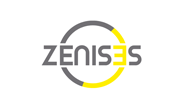How Can We Update the Education Model for the 21st Century?
One of my recent articles, How do we prepare our children better for the future?, ispired lots
of comments and questions, which I’d like to thank each and every one of you for. The main
question that I was asked was how can we utilise the latest technologies in order to make the
education process a personalised twenty-first century experience? How can we use robotics
and AI to engage our children and inspire a sense of curiosity, passion and perseverance, those
essential components of learning that are often somehow lost through the artisanal approach
to the education process?
Having done some research on the subject and through conversations that I’ve had with some
of the leadig tehologial ids oer i Silio Valley, its lear that AI, irtual reality ad 3D
printing have a crucial role to play in the future of education. Tablets and laptops now sit on
every student’s desk and have become as ubiquitous a part of the education process as the
humble pen and paper. But if students also had 3D printers sat alongside their tablets and
laptops, this would allow them to immerse themselves in subjects such as tech, science and
egieerig i a ay that siply hast ee possile efore. Just iagie the possiilities!
Instead of simply reading or learning through a visual presentation, kids will be able to literally
print out an object and study it in its physical form, thus making education a truly engaging and
immersive experience.
Research shows that human beings learn best through action and simulation. The current
education system still relies on visual and audio learning, so when we consider that we only
remember 20% of what we hear and 30% of what we see, it’s of little wonder that many
students are left feeling disengaged and under-stimulated in the classroom. But we remember
up to 90% of what we do or simulate, which is why virtual reality is one of the most effective
technologies for engaging our kids in the learning process.
Sure, hearing about the very depths of the Pacific Ocean and imagining what it might be like is
interesting but imagine if, through virtual reality, teachers could simulate actually being there!
So rather than learning about the respiratory system through words and images, students could
take a virtual tour around the human body and experience the world as if they were a blood
itself on its journey to becoming oxygenated. Combine virtual reality with augmented reality
and suddenly the student becomes an active participator in the learning process, rather than a
passive observer.
The other great thing about machine learning is that it can be adapted and personalised to
appeal directly to each individual student, no matter what his or her learning style or
educational background. AI teachers for example, unlike their human counterparts, will be able
to use global networks and sensors to share and access unlimited information and intellectual
resources such as interactive video content at lightning-fast speeds. They will be able to
monitor our kids for signs of frustration or boredom and will adapt the model accordingly to
ensure that every child gets a personalised, immersive learning experience that takes them far
beyond the confines of textbooks and stuffy classrooms. So in a very real sense, such
technologies could serve as a much-needed equaliser, creating a system where every child has
equal access to education and therefore equal chance of unlocking their full potential.
However, from what I see happening across Europe and the Middle East, whilst such
technologies are undoubtedly crucial to updating the education model for the twenty-first
century, what seems to be missing both in education and in business is a tolerance for failure.
So what we really need is a mind-set shift and we only need to look to Silicon Valley for
inspiration. Because here, failure isn’t only expected but welcomed and embraced because they
recognise it as being a critical aspect of the learning process. In fact, many investors won’t fund
your business unless it’s experienced some kind of failure. This is a difficult lesson to learn and a
difficult lesson to teach. But in some ways, helping our kids develop a tolerance for failure is
even more important than ensuring that they have access to all the latest technologies.
We only have to look at the Millennial generation to see that the current approach to education
is in desperate need of updating. Because it seems that rather than raising a generation who
are adaptable and resilient, we have coddled them to the point that many now have such a
strog fear of akig istakes ad of eig pereied to fail that they hae ee crippled into
complete inactivity.
The fact is that our kids need to be able to deal with criticism. So the best way to prepare our
children for the inevitable changes to come is by teaching them that learning is by its very
nature a process of trial and error and that being able to recognise the value of failing is a
crucial ability, in life as well as in education. Because this is the only way that they will learn,
grow and ultimately survive in what is becoming an increasingly competitive world.





